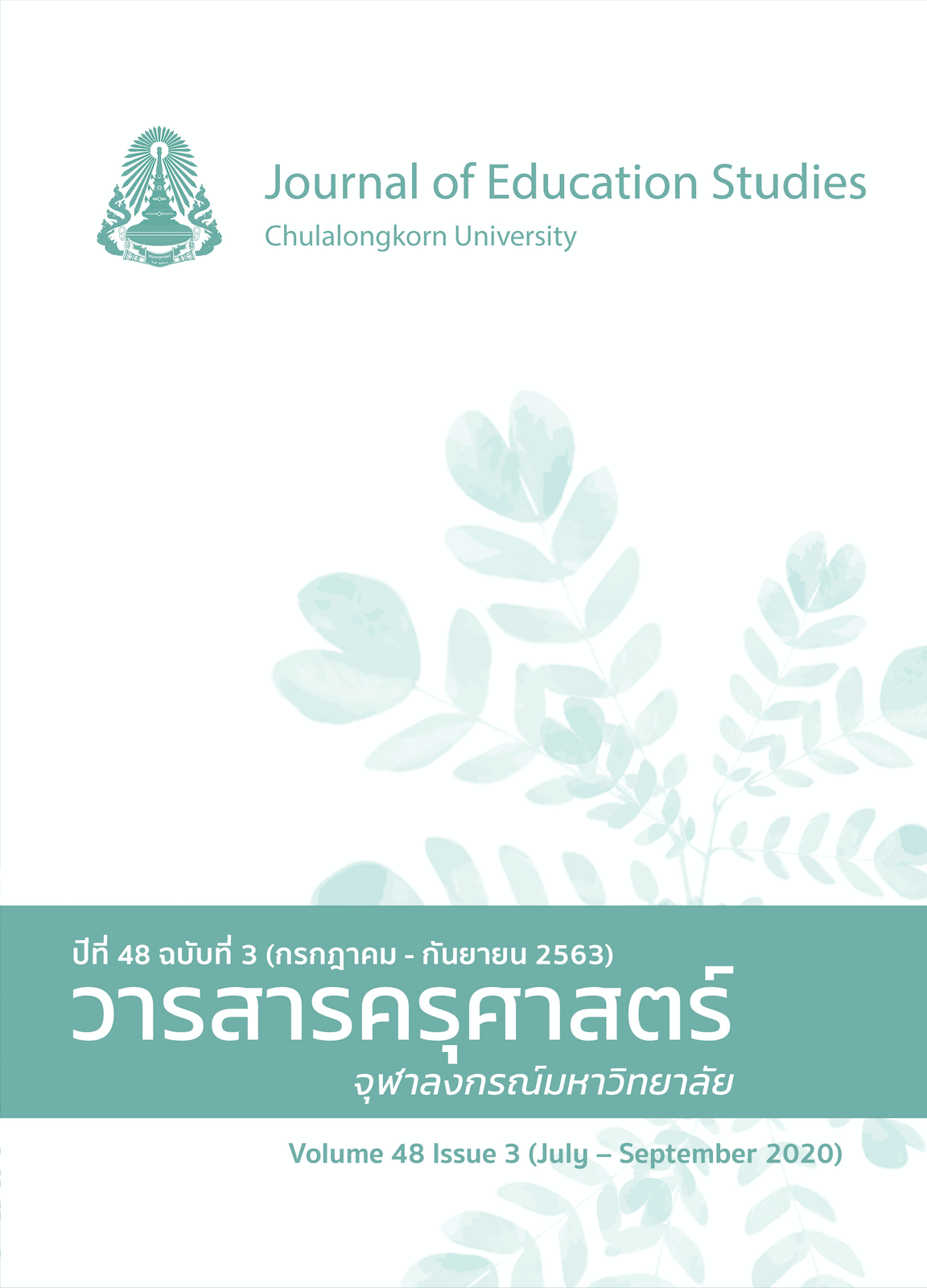A Needs Assessment for Enhancing Creative Problem Solving of Undergraduate Students
Keywords:
needs assessment, creative problem solving, undergraduate studentsAbstract
This study was conducted using a survey research method with the aim to study the state and problems of instructional for developing creative problem solving skills of undergraduate students. The population of this study consisted of 55 instructors and 478 undergraduate students. The research instruments consisted of questionnaires. Quantitative data were analyzed by means of descriptive statistics to acquire frequency, percentage, mean and standard deviation, and the use of a Modified Priority Needs Index (PNImodified) technique to prioritize the needs.
The result of this research were as follows: 1) The priority needs results of instructor show that the highest index was ability of student to solve problems in new ways (PNImodified = 0.32), followed by the ability of student to find a variety of ideas to solve problems (PNImodified = 0.31) 2) The priority needs result of undergraduate students show that the highest index related to instructor was students can solve the problem in a new way and student can solve problems within the specified time when problems occur (PNImodified = 0.08) 3) Regarding the requirements necessary for instructor of teaching to enhance creative problem solving, The result found that instructor are required to organized activities that motivate students to have many perspectives on many different things (PNImodified = 0.15)
References
Cropley, A. J. (2000). Defining and measuring creativity: Are creativity tests worth using?. Roeper Review, 23(2), 72-79.
Dumas, D., Schmidt, L. C., & Alexander, P. A. (2016). Predicting creative problem solving in engineering design. Thinking Skills and Creativity, 21, 50-66.
Guilford, J. P. (1967). Creativity: Yesterday, today and tomorrow. The Journal of Creative Behavior, 1(1), 3-14.
Hajiyakhchali, A. (2013). The effects of creative problem solving process training on academic well-being of Shahid Chamran University students. Procedia-Social and Behavioral Sciences, 84, 549-552.
Krejcie, R. V., & Morgan, D. W. (1970). Determining sample size for research activities. Educational and Psychological Measurement, 30, 607-610.
Malakul Na Ayudhaya, P. (1994). Creativity: Developed talents. Faculty of Education, Chulalongkorn Univerisy.
Mitchell, E. W., & Kowalik, F. K. (1999). Creative problem solving. Binghamton University. http://ceo.binghamton.edu/kowalik/docs/CreativeProblemSolving.pdf
National Statistical Office. (2013). Thailand characteristics of workers in establishments classified by level of knowledge 2013. http://www.nso.go.th
Office of the Education Council. (2001). Report of the higher education reform in Thailand. The Committee for Reform of Higher Education, Office of the Education Council.
Office of the National Economic and Social Development Board, Prime Minister's Office. (2016). The twelfth national economic and social development plan (2017-2021). https://www.nesdc.go.th/ewt_dl_link.php?nid=9640
Parnskul, S. (2002). A proposed learning model for creative problem solving process using internet based cooperative learning within the organization [Unpublished doctoral dissertation]. Chulalongkorn Univeristy.
Thai Health Promotion Foundation. (2015). A study on the quality of life in child and adolescents in Thailand 2013-2014. Child Watch. http://www.childwatchthai.org/imgadmins/year_pdf/Year2556_20160411141353.pdf
Torrance, E. P. (1972). Can we teach children to think creatively?. The Journal of Creative Behavior, 6(2), 114-143. https://doi.org/10.1002/j.2162-6057.1972.tb00923.x
Treffinger, D. J. (1995). Creative problem solving: Overview and educational implications. Educational Psychology Review, 7(3), 301-312.
Treffinger, D. J. (2007). Creative problem solving (CPS): Powerful tools for managing change and developing talent. Gifted and Talented International, 22(2), 8-18.
UNICEF. (2015). Children and young people in Thailand: UNICEF situation analysis. www.unicef.or.th/SitAnVideo2016/sitan_executive_summary.docx
Wood, D., Lindsay, N. J., Gluth, S., Corso, R., & Bilsborow, C. (2017). Facilitating creative problem solving in the marketing curriculum in response to the demands of the networked information society. In The customer is not always right? Marketing orientationsin a dynamic business world (pp. 12-21). Springer.
Wu, L. J., & Hsiao, H. S. (2004). Using a knowledge-based management to design a web-based creative problem solving system. In International conference on web-based learning (pp. 225-232). Springer.




